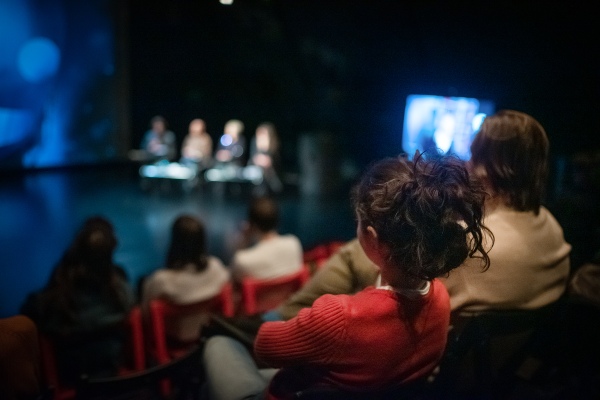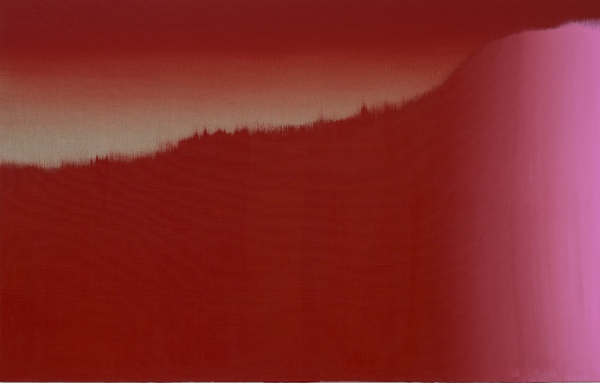Art & Migration
featuring Firoozeh Bazrafkan, Miriam Elia and Tasleem Mulhall
Art & Migration
Mainstream media describes the ongoing refugee crisis as a humanitarian crisis. Reports of the deaths of 27 people who were heading for the UK in November 2021 described the drowning as the biggest single loss of life in the English Channel since The International Organization for Migration’s records began in 2014. Belarus’ “thuggish president” uses refugees to attack the European Union and create tension with neighbouring Poland. Pope Francis has openly spoken about the failure of governments to react to the crisis with compassion and has inferred that the crisis is a “test of the character of civil society, and that their harsh treatment is a retreat from the values of post-war Europe.” What is to be done, and how should we respond? How should artists and curators engage with this situation?
The story of migration is as old as humanity itself – from the Holy Bible’s account of the chosen ones, the Israelites, forced out of Egypt in search of a new home, to Homer’s Odyssey in which Odysseus begins a 10-year journey back home to Ithaca following the war in Troy. The migration of Germanic tribes led to the fall of the Roman Empire and the emergence of a specific style and period of art called Migration Period art (c. 300 – 900) that later developed into Medieval or Barbarian as a result of the spread of Germanic nomadic tribes in Europe. Migration is the result of violent conflicts and invasions, expulsions, occupations, and horrific wars. People flee to seek a better life, refuge, or asylum. Even the Russian-born, atheist Romantic pro-free market capitalist writer Ayn Rand is said to have angrily retorted against anti-migrant sentiments, “Where would I be today if America closed its doors to immigrants?” Migrating to the US saved her from possible death or hard labour in a Soviet camp.
Unlike history, within contemporary culture, migrants/immigrants and the notion of open/no borders are romanticized, idealized, and put on a pedestal regardless of the reality of conflict between nations, borders, and migrants. During the 2020 Covid-19 pandemic, the 2004 Turner Prize winning British artist Jeremy Deller created a text-based public art billboard that was displayed outside the closed down South Bank Centre in London. It read: “An immigrant saving a racist’s life x 500,000, 2020”. The work was an attack on so-called “nativists”, portraying them as ignorant racists whose lives were saved by migrant doctors and nurses.
A more nuanced depiction of enforced or economic migration and the friction it may cause in relation to national borders and citizenry can be found in the speculative fictional story Exit West (2017) by the Pakistani novelist, Mohsin Hamid. The prophetic novel proposes a sci-fi narrative of people escaping via portals leading to the Western world from what could possibly be the ascendency and horror of the Islamic State or the Taliban. Conflict and war erupts between the new arrivals and natives, but the story also hints at optimism and posits new ideas of how migrants and natives could work together. Nevertheless, the story prioritizes the migrant perspective and the voices of the locals are secondary in the overall narrative.
Migration is a force for good but can lead to cultural clashes and customs that put progressive liberal and democratic values of free speech, sexual freedom, and tolerance to the test. From the jihadi fatwa against Salman Rushdie in 1989 for his alleged blasphemy against Islam to the murder by Islamists of the editorial team of France’s satirical anti-theocratic publication Charlie Hebdo. Many migrants have escaped dictatorship, authoritarianism, and violence and were welcomed by countries in Europe and beyond, as they re-imagine their new identities and find a new sense of belonging in their new home, the West.
The dark side of migration is rarely expressed in contemporary art. The uncomfortable paintings by the Czech-born artist Jana Zimova (currently living in Germany) in the Political Art exhibition symbolically depict the migrant subject as a wolf in sheep’s clothing. Another painting, Without Senses (2016), “illustrates the shocking events of New Year’s Eve 2015 when hundreds of women were violently attacked, sexually harassed, robbed, and beaten in major cities around Germany.” The BBC covered the news of assaults on women by men who “were of Arab or North African appearance.”
Writers and contemporary artists whose work can be seen in the Political Art exhibition – who all have migrant or immigrant background – will share their thoughts about the positive and negative aspects of art and migration in a friendly public conversation.
- Curators
- Manick Govinda
- Agnieszka Kolek












